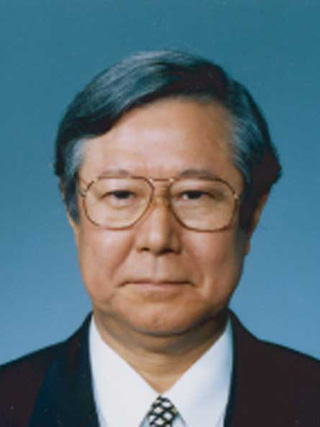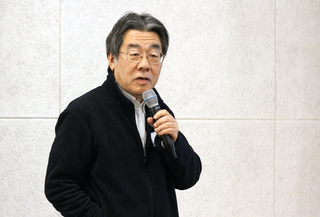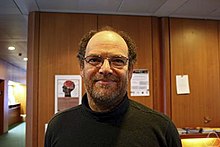
Heisuke Hironaka is a Japanese mathematician who was awarded the Fields Medal in 1970 for his contributions to algebraic geometry.

Faltings's theorem is a result in arithmetic geometry, according to which a curve of genus greater than 1 over the field of rational numbers has only finitely many rational points. This was conjectured in 1922 by Louis Mordell, and known as the Mordell conjecture until its 1983 proof by Gerd Faltings. The conjecture was later generalized by replacing by any number field.

In mathematics, birational geometry is a field of algebraic geometry in which the goal is to determine when two algebraic varieties are isomorphic outside lower-dimensional subsets. This amounts to studying mappings that are given by rational functions rather than polynomials; the map may fail to be defined where the rational functions have poles.
In mathematics, the Jacobian varietyJ(C) of a non-singular algebraic curve C of genus g is the moduli space of degree 0 line bundles. It is the connected component of the identity in the Picard group of C, hence an abelian variety.
In number theory and algebraic geometry, a rational point of an algebraic variety is a point whose coordinates belong to a given field. If the field is not mentioned, the field of rational numbers is generally understood. If the field is the field of real numbers, a rational point is more commonly called a real point.

In number theory and algebraic geometry, the Tate conjecture is a 1963 conjecture of John Tate that would describe the algebraic cycles on a variety in terms of a more computable invariant, the Galois representation on étale cohomology. The conjecture is a central problem in the theory of algebraic cycles. It can be considered an arithmetic analog of the Hodge conjecture.
This is a glossary of arithmetic and diophantine geometry in mathematics, areas growing out of the traditional study of Diophantine equations to encompass large parts of number theory and algebraic geometry. Much of the theory is in the form of proposed conjectures, which can be related at various levels of generality.

Gisbert Wüstholz is a German mathematician internationally known for his fundamental contributions to number theory and arithmetic geometry.

In algebraic geometry, the problem of resolution of singularities asks whether every algebraic variety V has a resolution, a non-singular variety W with a proper birational map W→V. For varieties over fields of characteristic 0 this was proved in Hironaka (1964), while for varieties over fields of characteristic p it is an open problem in dimensions at least 4.
In algebraic geometry, flips and flops are codimension-2 surgery operations arising in the minimal model program, given by blowing up along a relative canonical ring. In dimension 3 flips are used to construct minimal models, and any two birationally equivalent minimal models are connected by a sequence of flops. It is conjectured that the same is true in higher dimensions.
In algebraic geometry, the minimal model program is part of the birational classification of algebraic varieties. Its goal is to construct a birational model of any complex projective variety which is as simple as possible. The subject has its origins in the classical birational geometry of surfaces studied by the Italian school, and is currently an active research area within algebraic geometry.
In algebraic geometry, a crepant resolution of a singularity is a resolution that does not affect the canonical class of the manifold. The term "crepant" was coined by Miles Reid by removing the prefix "dis" from the word "discrepant", to indicate that the resolutions have no discrepancy in the canonical class.
János Kollár is a Hungarian mathematician, specializing in algebraic geometry.

Robert Frederick Coleman was an American mathematician, and professor at the University of California, Berkeley.

In algebraic geometry, a complex algebraic variety is an algebraic variety over the field of complex numbers.
Michael Liam McQuillan is a Scottish mathematician studying algebraic geometry. As of 2019 he is Professor at the University of Rome Tor Vergata.

Yujiro Kawamata is a Japanese mathematician working in algebraic geometry.

Lawrence Man Hou Ein is a mathematician who works in algebraic geometry.
Mihnea Popa is a Romanian-American mathematician at Harvard University, specializing in algebraic geometry. He is known for his work on complex birational geometry, Hodge theory, abelian varieties, and vector bundles.

In mathematics, a Siegel modular variety or Siegel moduli space is an algebraic variety that parametrizes certain types of abelian varieties of a fixed dimension. More precisely, Siegel modular varieties are the moduli spaces of principally polarized abelian varieties of a fixed dimension. They are named after Carl Ludwig Siegel, the 20th-century German number theorist who introduced the varieties in 1943.











